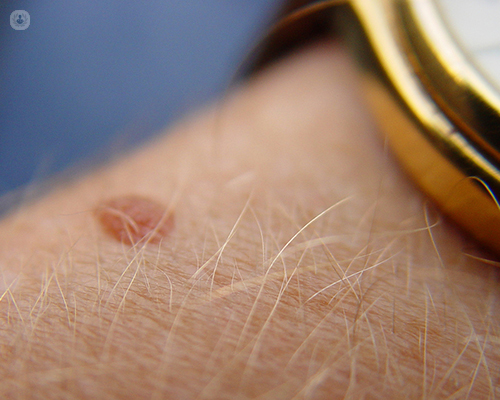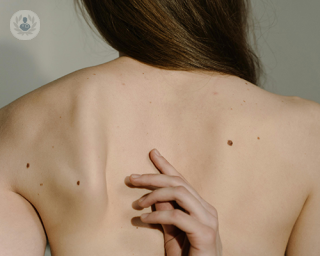Moles
Dr Nicola Clayton - Dermatology
Created on: 02-16-2015
Updated on: 10-30-2023
Edited by: Conor Lynch
What are moles?
Moles are pigmented spots which appear on the skin. They can often appear during childhood or adolescence without a known cause. Most moles are nothing to worry about and only become a concern when they change colour, size, or shape.
In some cases, people prefer to have them removed for aesthetic reasons, but this is largely done through the private sector as the NHS do not offer cosmetic mole removal. It is also worth noting that moles may also fade or disappear over time, and sometimes can darken during pregnancy. If you see noticeable changes in a mole, it is always best to have it checked by your doctor or dermatologist.

What do moles look like?
Moles can be varied in size, shape, and colour. They can be flat or raised, and most moles are oval or round-shaped. They may also have a smooth or rough texture, and have hair growing from them. Moles should be checked out by a doctor if you notice the following:
- A change in shape
- A change in colour or a separation of colour
- Bleeding
- Itching
- Crusting of the skin
- An increase in size
- The mole becoming more ‘raised’
What are the causes?
Moles or nevus occur when melancocytes, the pigment-producing cells of the skin, grow in clusters. Exposure to the sun influences their appearance, shape and size. Those who are fair-skinned are more likely to develop moles.
Can moles be prevented?
Monitoring sun exposure can prevent the appearance of some types of mole.
What is the treatment for moles?
The patient's dermatologist should keep track of the patient's moles, checking all those which change colour and shape or cause pain, or itch or bleed. If any of these symptoms present, the dermatologist may suggest mole removal as a precaution, in order to prevent melanoma developing. This operation is performed on an outpatient basis.

















